The Dodge Charger has left an indelible mark since its debut in 1966. Born as a show car in 1964, not even the 1966 production version looked like it stood much chance having been foreshadowed by the Charger II concept in 1965. Over the years, the Charger has undergone several transformations, spanning various platforms and sizes. Its nameplate has graced the likes of pony cars, muscle cars, luxury coupes, and even subcompact hatchbacks. Today, the Charger stands as a full-size four-door sedan.
The Charger entered production in 1966 because Dodge embarked on a mission to create an upscale, larger pony car, a playbook that ultimately set it apart from the competition. While American Motors had already introduced a similar vehicle in the form of the (Rambler) Marlin in 1965, the Charger was tailored for the emerging personal car market.
So, the Charger took a unique approach by positioning itself as a more opulent and pricier coupe, targeting the market segment occupied by the Oldsmobile Toronado and Ford Thunderbird rather than the traditional muscle car segment. This article takes a nostalgic journey back to the 1970 Dodge Charger RT, a true gem in the Charger's storied history.
Related Reading: Top 5 Fantastic ‘90s Performance Cars We Will Never Forget (And Neither Should You)
A Brief History Of The 1970 Dodge Charger RT
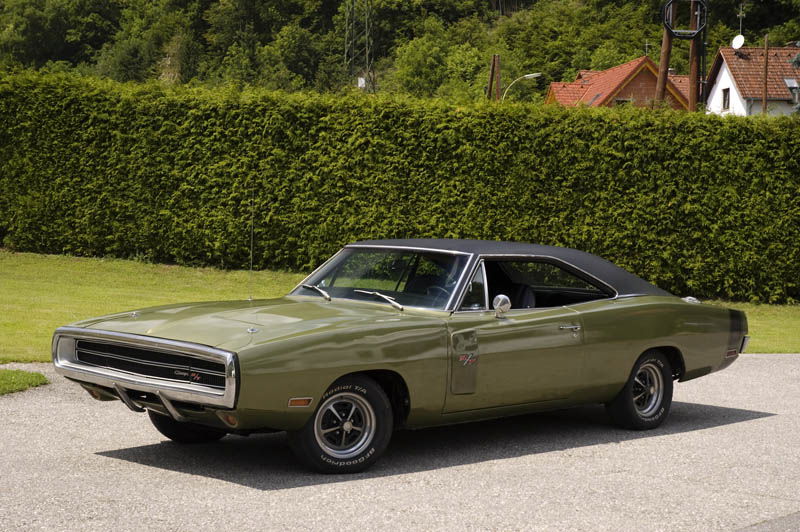
Photo Credit: RTdriver via Wikimedia
The 1970 Dodge Charger RT was – and still is – an embodiment of fascination in the ponycar market. You already respect this classic, but you’ll appreciate it even more if you’re familiar with its story. The Charger story began in 1966 when Dodge set out to create something extraordinary – an upscale, larger pony car that would redefine the segment.
At the time, American Motors had already ventured into this territory with the (Rambler) Marlin, targeting the emerging personal car niche. Meanwhile, Mercury made waves by introducing the upscale Cougar, which not only exceeded the size of the Ford Mustang, the pioneer of the pony car concept in 1964 but also added an element of refinement to the equation.
However, the Charger stood out with its unique positioning. While other muscle cars dominated the market, the Charger sought everyone’s attention as a more expensive and luxurious coupe.
Fast forward to 1968, the Charger underwent a significant redesign. Initially planned for a production run of 35,000 units, it soon became clear that the demand was far greater. An impressive 96,100 Chargers rolled off the assembly lines for the 1968 model year. You’d have to pay $3,014 ($26,388 in today’s, adjusted for inflation) to get one, $3,480 if you fancied the top-of-the-line RT variant.
Based on the Chrysler B platform, each model year featured various cosmetic changes to the exterior and interior, including a distinctive undivided grille, rounded tail lights, and hidden headlights. The powertrains remained largely consistent with those from 1967, although the 225 cu in (3.7 L) slant-6 became available in mid-1968.
The Charger's journey also found its way onto the racetrack, albeit with mixed results. It struggled in stock car racing like NASCAR until a stroke of inspiration led to the creation of the Charger 500, which laid the foundation for the legendary 1969 Charger Daytona.
However, it was the 1970 Dodge Charger that truly left its mark, clinching victory in numerous NASCAR races that year and playing a pivotal role in Bobby Isaac's championship win.
Related Reading: Here Are 20 Fast Cars Under $10k On The Market Right Now
Features And Specifications: What Made The 1970 Dodge Charger RT Special
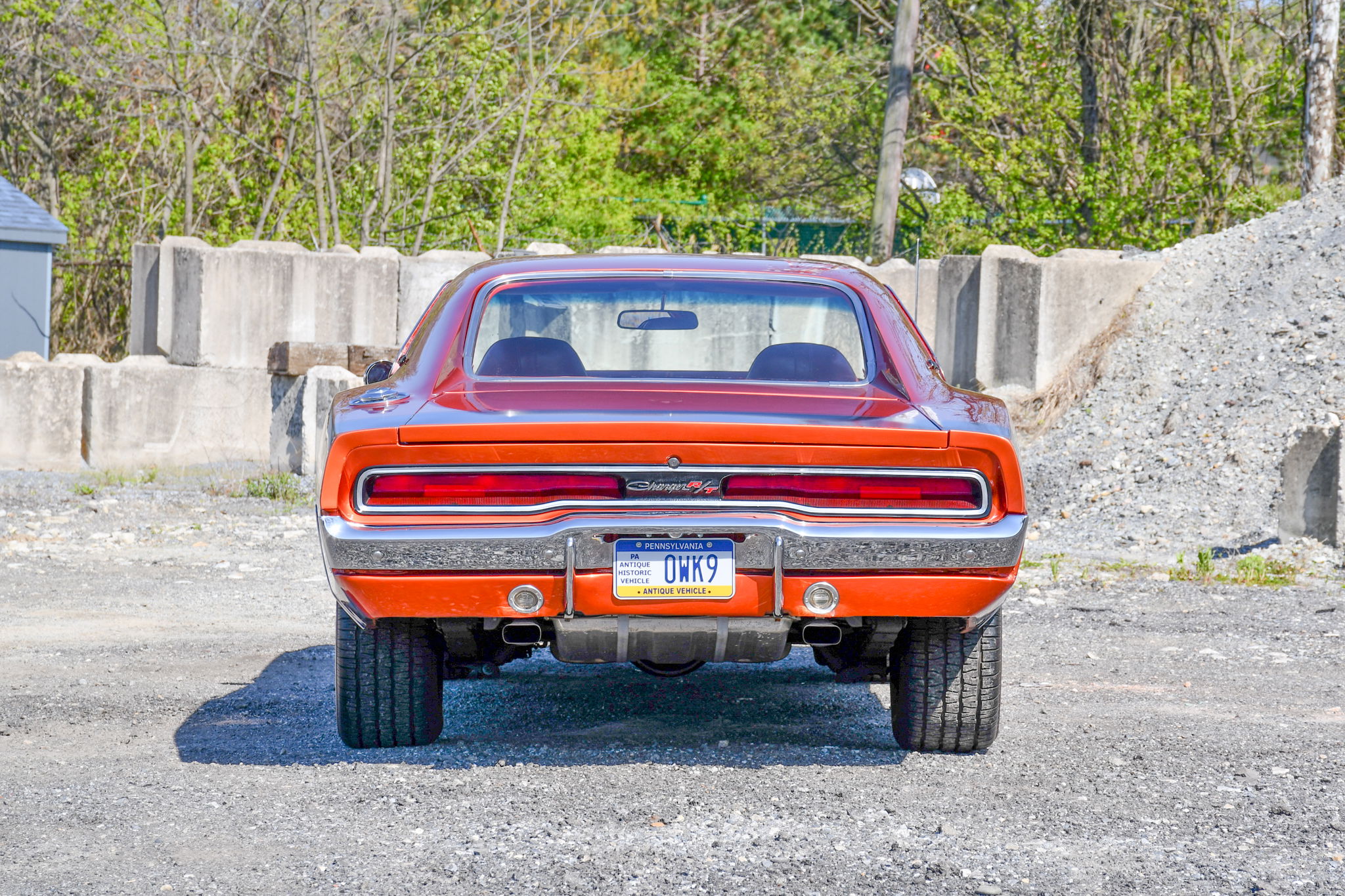
Photo Credit: BringaTrailer
The 1970 Dodge Charger R/T Hemi, in its final year of the classic muscle car era, pulled out all the stops to deliver an unforgettable performance. Like a seasoned fighter unleashing every trick in the book, this Charger left no stone unturned.
It sported a new chrome loop front bumper, complemented by fresh full-width taillamp housing. R/T versions even boasted a simulated reverse body-side scoop, adding to their allure.
The color palette embraced youthful exuberance with eye-catching hues like Plum Crazy and Go-Mango borrowed from the new Challenger. Inside, the Charger received its first true bucket seats this year.
The available four-speed transmission now featured a hip pistol-grip handle, adding a touch of cool to the driving experience. For a touch of luxury, the pricier SE (Special Edition) group offered plush leather upholstery.
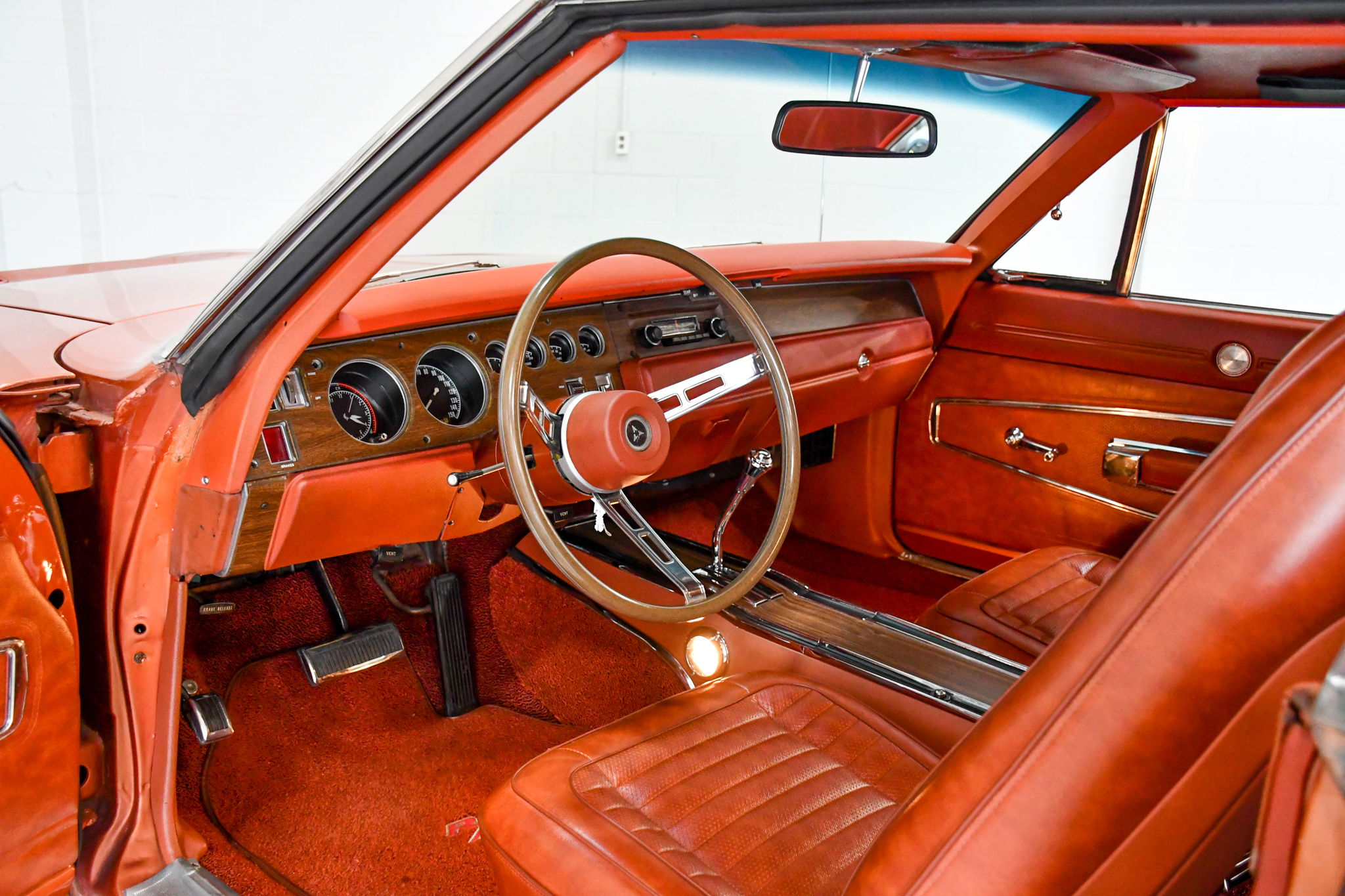
Photo Credit: BringaTrailer
A groundbreaking addition was the electric sliding sunroof, a first for the Charger, allowing drivers to enjoy the open sky as they roared down the road. Standard on the R/T was the robust 375-hp 440-cid four-barrel engine.
And for those who didn't want to commit to the Hemi's extra cost and upkeep, a new option emerged – the 390-hp 440 with three Holley two-barrel carburetors. This powerful engine offered exceptional torque and made the Charger a formidable contender on the streets.
The Hemi engine received an upgrade with the introduction of hydraulic lifters, offering better valve lash maintenance and enhancing Hemi performance. However, harnessing and commanding the Hemi's power required the skills of an experienced driver, as opening all four carburetor barrels prematurely meant losing control.
The 1970 Charger R/T was a special one in the muscle car arena thanks to its impressive combination of excitement and luxury. Unfortunately, challenges such as rising insurance rates and tougher competition led to a 50 percent drop in R/T sales, totaling 10,337 units for the model year.
Surprisingly, the new Six Pack option outsold the Hemi by more than two to one with 116 orders. The 1970 Charger R/T Hemi remains a testament to a remarkable American muscle era.
What is the 1970 Dodge Charger RT Worth?

Photo Credit: BringaTrailer
Using Conceptcarz’s market evaluation tool, the 1970 Dodge Charger RT Hardtop has a median sale value of $51,700, although the engine under the hood equally influences the value. The report went on to show that the median auction sale value of a 1970 Charger as of 2023 is $85,525, fetching as much as $253,000 and as little as $42,900.
Browsing the prices on classic car sites like Hemmings supports this market report. According to Hagerty, the most recently sold 1970 Dodge Charger RT changed hands for $79,200. Hagerty's estimate is even steeper, showing the market valuation of a 1970 Charger RT in "Good Condition" at a mouth-watering $124,000.
According to Conceptcarz, 26 1970 Dodge Chargers have sold at auction this year, with a total of 33 units offered for sale.
What Is The Most Expensive Dodge Charger Ever Sold?
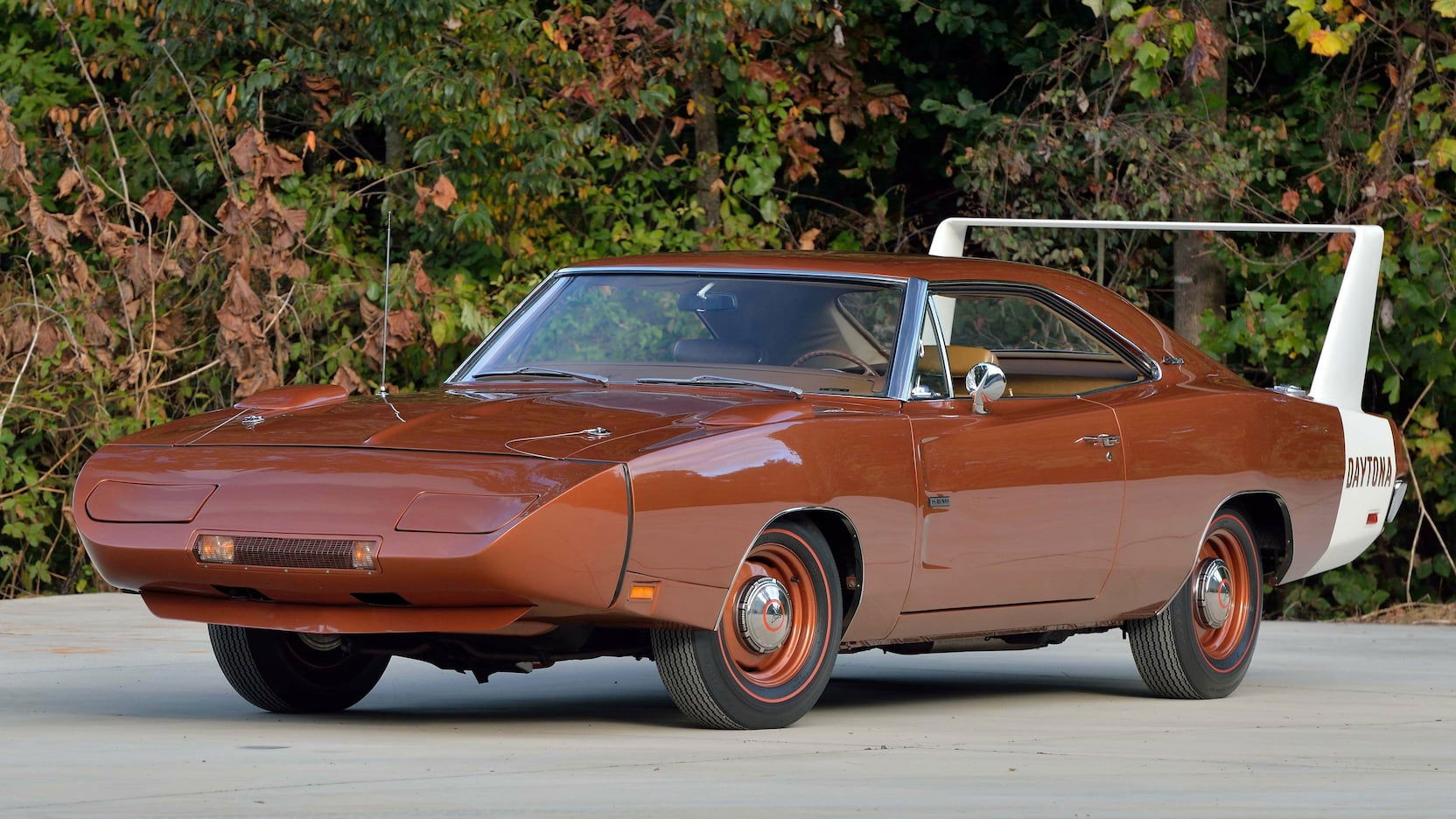
1969 Dodge Charger Hemi Daytona - Photo Credit: Mecum
The honor of the most expensive Dodge Charger ever sold went to a 1969 Dodge Charger Hemi Daytona, which fetched a record $1.43 million at a Mecum Auction in Kissimmee in early 2023. Dodge built the winged Charger Daytona variant for just one year as a homologation model for NASCAR.
Only 505 examples saw the light of day that year, and the Charger has never looked more conspicuous in its entire history.
As for the RT, the most expensive 1970 Dodge Charger RT ever sold at auction was a 1970 Dodge Charger Hemi R/T SE, which went under the hammer for a staggering $330,000. This particular Charger was an SE (Special Edition) model, featuring luxurious leather upholstery and boasting the mighty 426 Hemi engine.
Its pristine condition, rarity, and the Hemi powerplant's desirability contributed to its impressive price tag. Collectors and enthusiasts alike continue to cherish these iconic cars, and their value in the collector's market remains substantial.
Related Reading: The 7 Cheapest Highest Horsepower Daily Driver Cars 2023
What Is The 1970 Dodge Charger RT’s Top Speed?
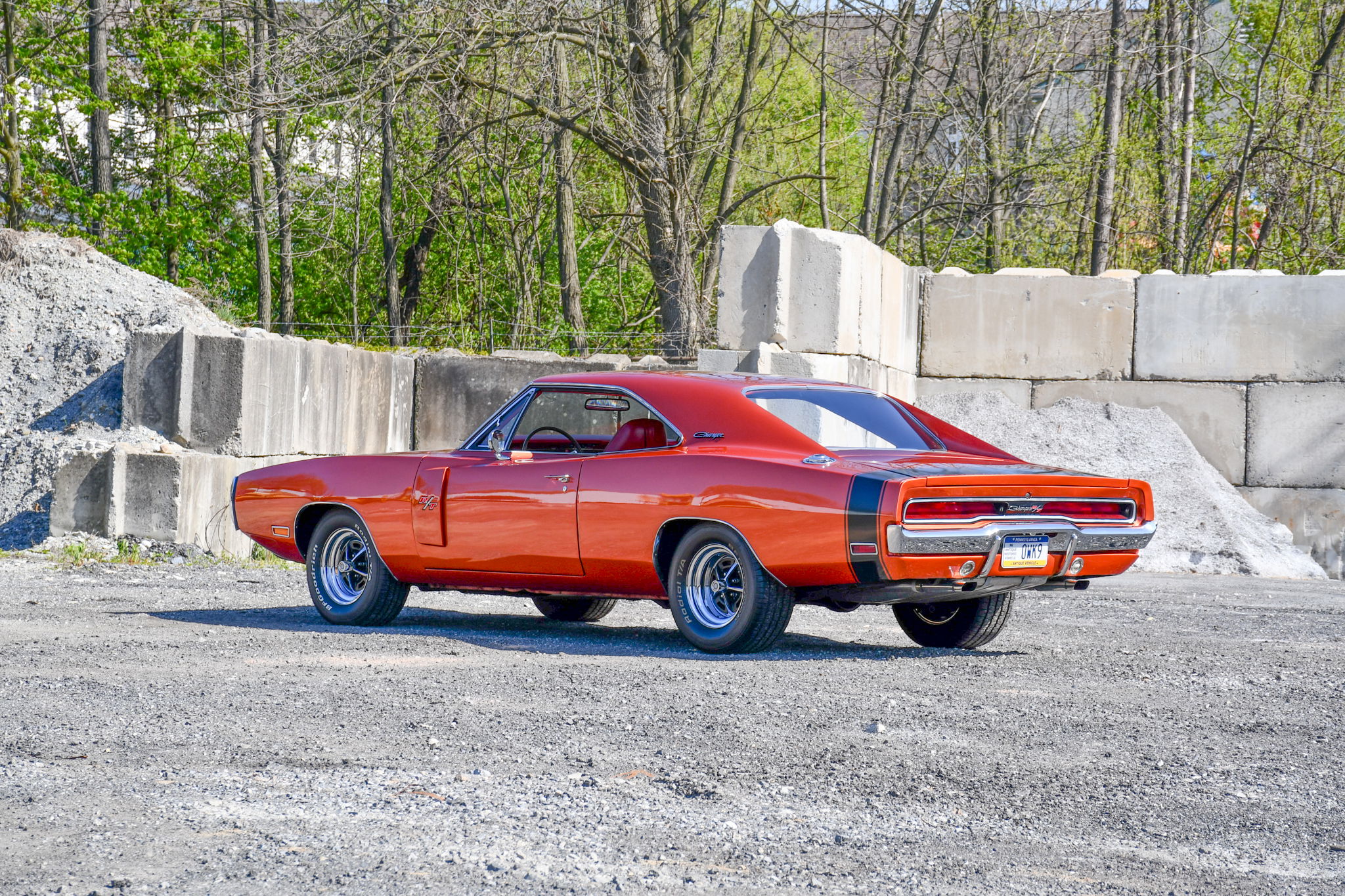
Photo Credit: BringaTrailer
With the standard 375-hp 440-cid four-barrel engine, the 1970 Charger RT could reach a top speed of approximately 135 to 140 mph.
However, the real star of the Charger RT lineup was the legendary 426 Hemi engine, which could propel the muscle car to even greater speeds, often exceeding 150 mph.
The Hemi engine was a true beast, offering unparalleled performance and contributing to the Charger's reputation as a high-speed thrill-seeker.
1970 Dodge Charger And Challenger: Which Is Faster?
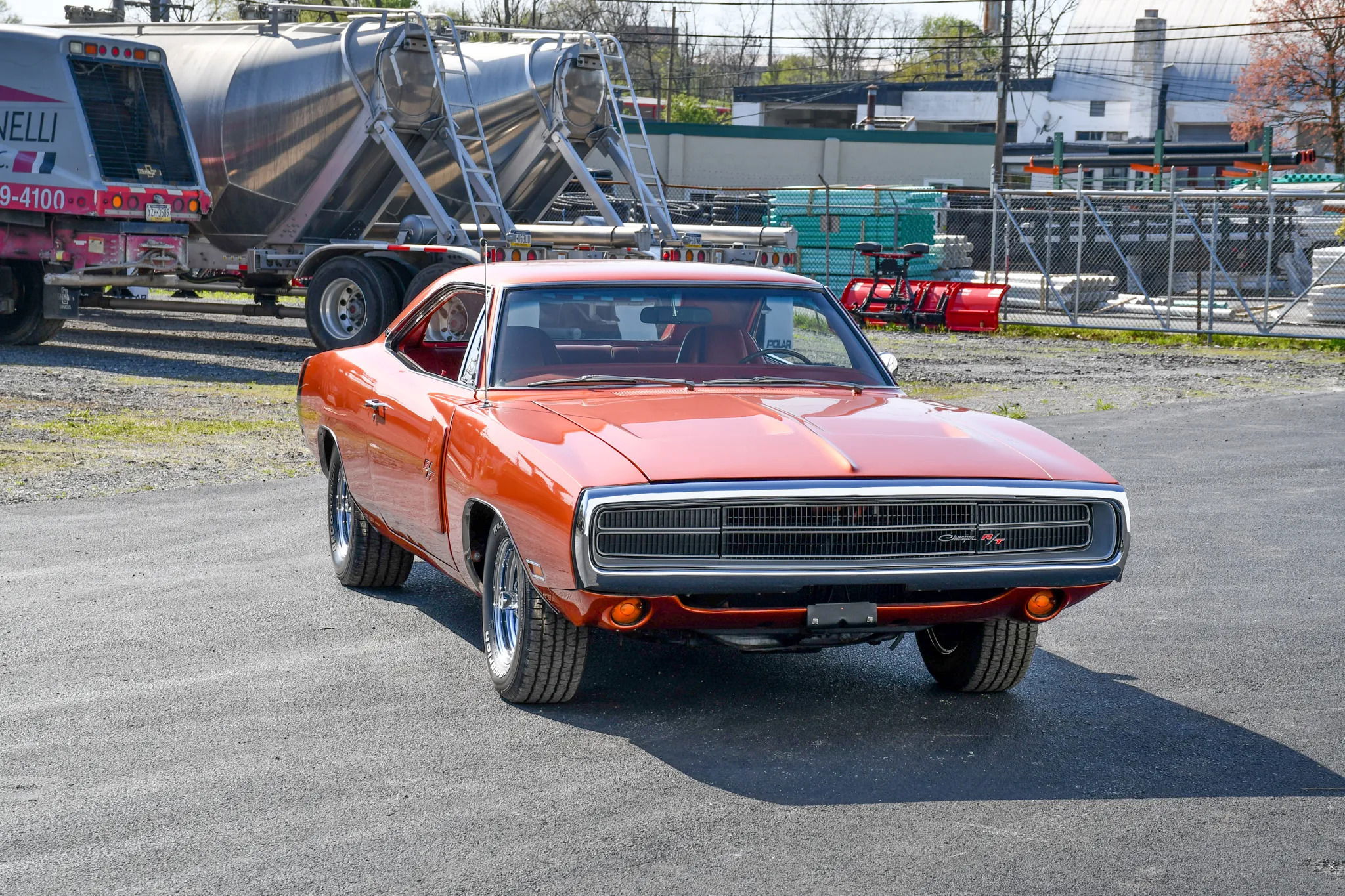
Photo Credit: BringaTrailer
When equipped with the same high-performance engines, both the Charger RT and the Challenger R/T were capable of remarkable acceleration and top speeds. It's challenging to definitively say which one was faster, as the actual performance could vary depending on engine options and specific configurations.
Many enthusiasts loved the Charger for its sleek, full-size body and speed, while the Challenger was admired for its aggressive appearance and formidable power.
While the Charger RT was a fast and luxurious muscle car, the Challenger, in its various trims, including the R/T, was equally formidable but offered a different driving experience. Both cars had their devoted fan bases, and the choice between them often came down to personal preference.
What Does The RT Means On Dodge Charger?

Photo Credit: BringaTrailer
The "RT" designation in the Charger RT is short for "Road/Track." This indicates that the Charger variant blended road-going comfort and high-performance track capabilities.
The RT badge signified that the Charger wearing that badge features enhanced suspension, handling, and powertrain components compared to the standard Charger.
The 1999 Dodge Charger RT Concept Car

1999 Dodge Charger RT Concept - Photo Credit: Wikipedia
The Chrysler-made 1999 Dodge Charger RT concept car paid homage to the iconic Chargers of the 1960s, particularly the second generation. Unlike its predecessors, this concept car cleverly blended four doors into its seamless design.
The decision to add four doors was in response to the changing preferences in the North American sports coupe market. It even explored compressed natural gas (CNG) as a potential fuel source.
Tom Gale, Chrysler styling department head, masterminded the exterior design, while the interior was the handiwork of design partner Trevor Creed.
Although it retained some classic Charger features, like the long nose and rearward cab, the 1999 concept was shorter and lighter than the 1966 Charger, measuring 187 inches in length and weighing 3,000 pounds. It embraced design elements like coke-bottle styling, flying rear buttresses, full-length taillamps, and distinctive air intakes.
Under the hood, its power came from a supercharged 289 cubic inch 4.7-liter V8 engine, producing 325 horsepower, mated to a five-speed manual transmission.
This concept car marked a departure from Chrysler's traditional front-wheel-drive vehicles, as it was the first rear-wheel-drive car based on the Chrysler LH platform.
Inside, the car featured bucket seats for all four occupants, a center console that ran the full length of the dashboard, a NASCAR-inspired three-spoke steering wheel, and rotary-style gauges. The interior wore black and red leather upholstery and carbon fiber trim.
The innovative CNG technology, with cylinders housed in a fiberglass storage tank, provided a 300-mile range without compromising trunk space.
The car also boasted functional side scoops and a chrome-plated central-mounted exhaust. Despite its promising features and performance, the 1999 Charger RT concept car never made it to production.
Following the DaimlerChrysler merger, the company shifted direction, and a new Dodge Charger (LX) emerged in 2006, bearing little resemblance to the 1999 concept. Nonetheless, the 1999 Dodge Charger RT concept car lives on in the virtual world, featured in the video game "Midnight Club 3: DUB Edition.